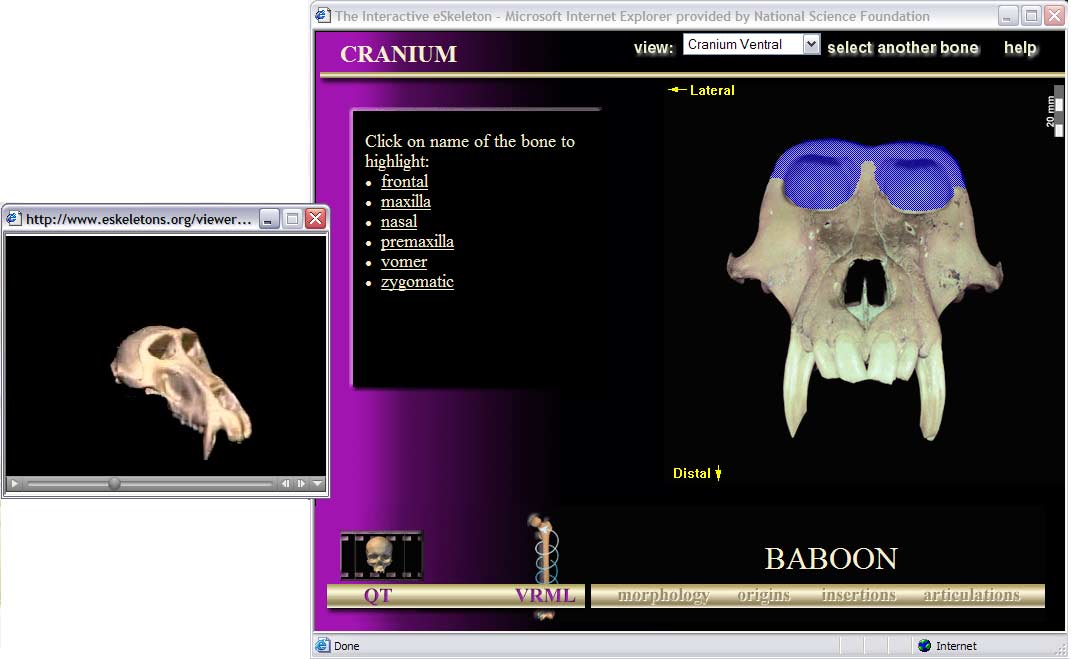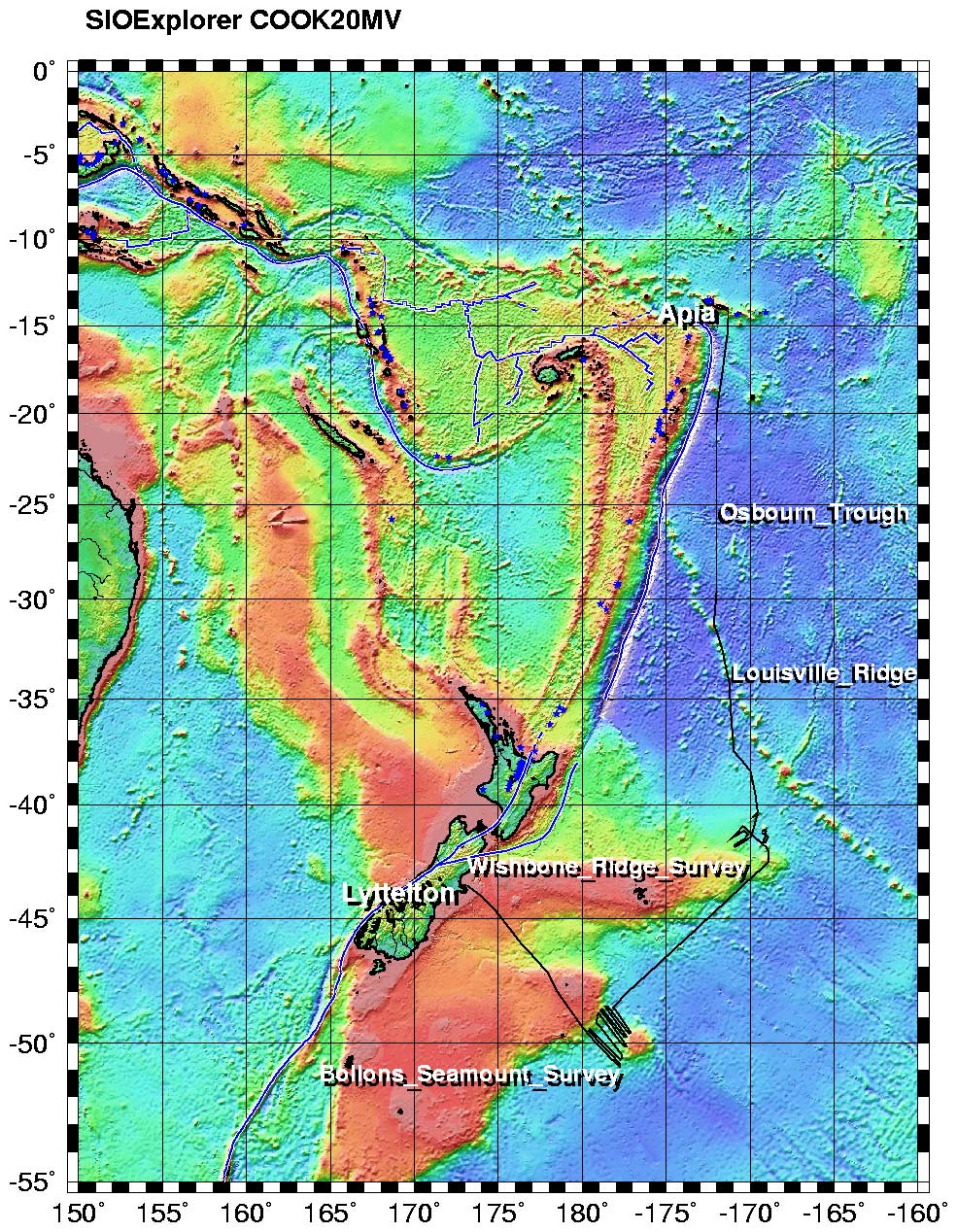 |
|
|
 |
||
|
||||
|
Photo 1
The eSkeletons digital library lets students examine and compare the skeletons of a human, gorilla, baboon and other species through high-resolution annotated photos and 3-D digital models. The collection will soon provide data in a format that will allow users to build replicas of the bones. This image shows a baboon skull with the frontal bone highlighted and a 3-D model of the skull.
Photo 2
Photo 3
Photo 4
In the 1800s, German engineering professor Franz Reuleaux designed hundreds of devices to teach the principles of kinematics. These photos show an original Rouleaux model of a ratchet mechanism (1882) in the Cornell Collection of Reuleaux Kinematic Models, a 3-D computer-aided design representation of the original, and a 3-D model (2003) "printed" with rapid prototyping technology. Cornell University is creating the Kinematic Models for Design Digital Library (K-MODDL) to let students and teachers see, interact with and even replicate more than 200 of these rare Reuleaux devices. From a preprint, "3-D Printing the History of Mechanisms" (2003), H. Lipson, F.C. Moon, J. Hai and C. Paventi, Cornell University Sibley School of Mechanical Engineering.
Photo 5
A prototype SIOExplorer Digital Library system was tested on board the R/V Melville of the Scripps Institution of Oceanography (SIO), during the Cook Expedition, Leg 20, from New Zealand to Samoa. Shipboard data streams were automatically prepared for online search across the web as a part of the National Science Digital Library. The SeaBeam sonar on the R/V Melville maps a swath of the seafloor approximately 20 km wide in deep water, creating real-time contour maps of ocean depth. The result of the cruise was approximately 10 GB of new digital data, ready for search along with the evolving SIOExplorer collection of data, documention, reports, images, sampling information and publications from 721 SIO cruises since 1950.
Photo 6
The seas south of New Zealand are known to get rough due to constant Antarctic storms. This photo was taken on board the R/V Melville of the Scripps Institution of Oceanography during the Cook Expedition, Leg 20, from New Zealand to Samoa. The ship was at around 50 degrees south latitude, also known as the "ferocious fifties."
Photo 7
A participant at the Pacific Educational Conference in Pohnpei, the largest island in the Federated States of Micronesia, undertakes an activity on weaving and symmetry available through the Ethnomathematics Digital Library.
|
||||
|
|
|
|






